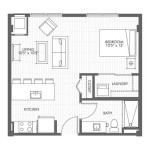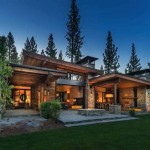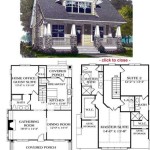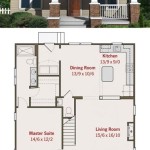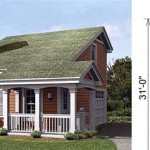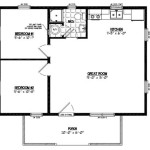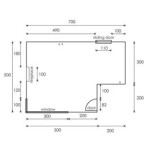Small Home Floor Plans With Basement: Maximizing Space and Value
The allure of small home living is multifaceted. Affordability, reduced maintenance, and a smaller environmental footprint are potent drivers for many individuals and families. However, shrinking square footage requires intelligent design solutions, and one of the most impactful is incorporating a basement. Small home floor plans with basements offer a unique opportunity to significantly expand living space without altering the above-ground footprint. This article explores the benefits, considerations, and diverse options available when integrating a basement into a small home design.
A basement’s utility extends far beyond simple storage. It can be transformed into functional living areas, increasing the overall value and versatility of a small home. The design of the basement, its accessibility, and its integration with the upper levels are crucial factors in maximizing its potential. Careful planning allows the creation of a comfortable and valuable addition to the home.
Benefits of Incorporating a Basement in a Small Home
Adding a basement to a small home offers a substantial increase in usable space. This additional area can be tailored to numerous purposes, effectively doubling the living area in some cases. The advantages go beyond simply increasing square footage; a well-designed basement enhances the overall functionality and appeal of the home.
First, a basement provides a dedicated space for storage. Clutter can quickly overwhelm a small home, and a basement offers a solution for storing seasonal items, tools, holiday decorations, and other belongings that are not needed on a daily basis. This decluttering contributes to a more organized and spacious feel on the main levels of the home.
Second, a basement can accommodate recreational areas. A finished basement can serve as a family room, home theater, game room, or even a home gym. These spaces provide residents with areas for relaxation and entertainment without encroaching on the primary living spaces above. This separation of functions contributes to a more peaceful and harmonious living environment.
Third, a basement can include additional bedrooms and bathrooms. For growing families or homeowners who frequently host guests, adding bedrooms and bathrooms in the basement can significantly increase the home's capacity. This is a cost-effective alternative to expanding the home's footprint or moving to a larger property.
Fourth, a well-designed basement can increase the resale value of a small home. Potential buyers often appreciate the added space and versatility a basement provides. A finished basement, in particular, can be a significant selling point, making the home more attractive to a wider range of potential buyers.
Finally, a basement offers a degree of safety and security. In regions prone to severe weather, a basement can serve as a safe shelter during storms or other emergencies. The below-ground location provides added protection from high winds, lightning, and other hazards.
Design Considerations for Small Home Floor Plans with Basements
Planning is paramount when incorporating a basement into a small home design. Several key design considerations influence the functionality, comfort, and cost-effectiveness of the basement. These considerations range from structural integrity to natural light and ventilation.
One of the most critical aspects is drainage and waterproofing. Basements are inherently susceptible to moisture problems, so proper drainage and waterproofing are essential to prevent water damage, mold growth, and structural issues. This involves installing effective drainage systems, such as perimeter drains and sump pumps, and applying waterproofing membranes to the foundation walls.
Another important consideration is natural light and ventilation. Basements can often feel dark and enclosed, so incorporating strategies to maximize natural light and ventilation is crucial. This can include installing larger windows, window wells, or even a walk-out basement design that allows for direct access to the outdoors. Proper ventilation helps to prevent moisture buildup and improve air quality.
Ceiling height is also a key factor. Lower ceilings can make a basement feel cramped and uncomfortable. Aiming for a ceiling height of at least eight feet can significantly improve the sense of space and openness. In some cases, it may be necessary to excavate deeper to achieve the desired ceiling height, which can add to the construction cost.
Access to the basement is another important design consideration. The location and design of the staircase leading to the basement should be carefully planned to ensure convenient and safe access. The staircase should be wide enough to accommodate furniture and other large items, and it should be well-lit to prevent accidents.
Finally, consider the layout and flow of the basement. The layout should be designed to maximize usable space and create a functional and comfortable living environment. Think about how the different areas of the basement will be used and how they will connect to each other. Consider incorporating features such as open floor plans, strategically placed walls, and adequate storage space.
Diverse Basement Floor Plan Options for Small Homes
The possibilities for basement floor plans in small homes are diverse, limited only by budget, building codes, and the homeowner's imagination. From simple storage solutions to fully finished living spaces, the basement can be tailored to meet a variety of needs and preferences. Understanding the different options available is essential for making informed decisions about the design and construction of the basement.
One option is a unfinished basement, which is the most basic and cost-effective approach. An unfinished basement provides a functional space for storage and utilities but lacks finished walls, flooring, or ceilings. While it may not be aesthetically pleasing, an unfinished basement offers a practical and affordable solution for expanding storage capacity.
A partially finished basement offers a compromise between the affordability of an unfinished basement and the comfort of a fully finished space. In a partially finished basement, some areas may be finished while others remain unfinished. For example, a portion of the basement might be finished to create a family room, while the remaining area is used for storage. This approach allows homeowners to prioritize their budget and focus on finishing the areas that will be used most frequently.
A fully finished basement transforms the basement into an integral part of the home. A fully finished basement includes finished walls, flooring, ceilings, lighting, and heating/cooling systems. It can be designed to include bedrooms, bathrooms, a family room, a home office, or any other type of living space. A fully finished basement effectively doubles the living area of the home and significantly increases its value.
A walk-out basement offers a unique design option that combines the benefits of a basement with the convenience of direct access to the outdoors. A walk-out basement is typically located on a sloping lot, allowing for a portion of the basement to be above ground level with a door leading directly to a patio or backyard. This design allows for more natural light and ventilation and creates a seamless connection between the indoor and outdoor living spaces.
Another variation is a garden-level basement which is similar to a walk-out basement, but it is typically not fully above ground level. Garden-level basements still offer some natural light and ventilation through windows and often include a small patio or garden area. This design is a good option for homeowners who want to maximize natural light in the basement without the cost and complexity of a full walk-out design.
Finally, a basement apartment, also known as an accessory dwelling unit (ADU), can be a valuable addition to a small home. A basement apartment is a self-contained living unit with its own entrance, kitchen, bathroom, and living space. A basement apartment can be used for a variety of purposes, such as renting it out to generate income, providing housing for family members, or creating a guest suite. However, building a basement apartment typically requires compliance with local zoning regulations and building codes.
In conclusion, incorporating a basement into a small home floor plan is a strategic decision that can significantly enhance the functionality and value of the property. By carefully considering the design, planning for waterproofing and ventilation, and exploring the diverse range of floor plan options, homeowners can create a comfortable and versatile living space that meets their unique needs and preferences.

Small Cottage Plan With Walkout Basement Floor

Small Cottage Plan With Walkout Basement Floor

Cottage House Plan With 3 Bedrooms And 2 5 Baths 3800

House Plans With Basements Dfd Blog

Small Walkout Basement House Plans Lighting Best Design Ranch Style Simple

Basement Floor Plans

Basement Layout

House Plans Floor W In Law Suite And Basement Apartement

Basement Floor Plans Types Examples Considerations Cedreo

Think Ahead And Plan For Future Space Requirements By Building Your Tiny Home On A Basement Fou Small House Floor Plans Hotel
Related Posts

